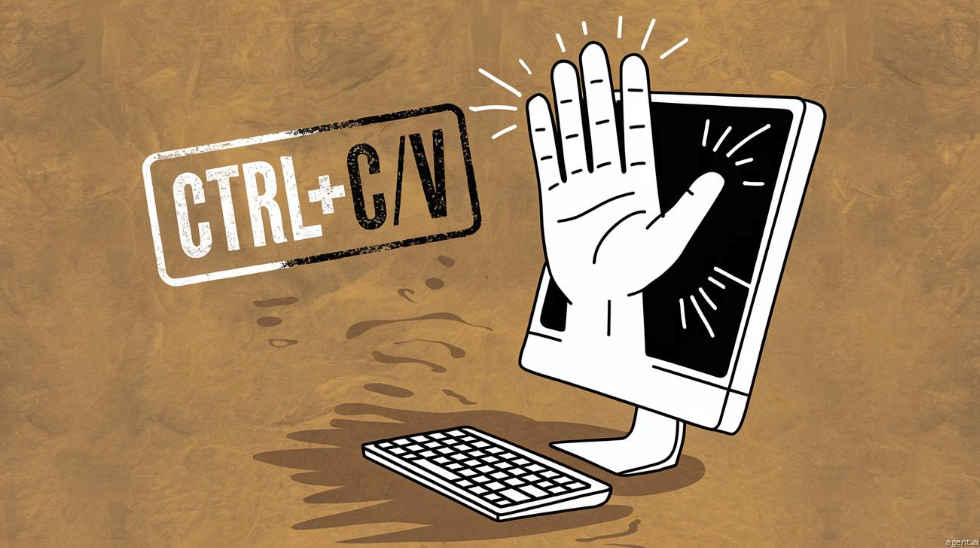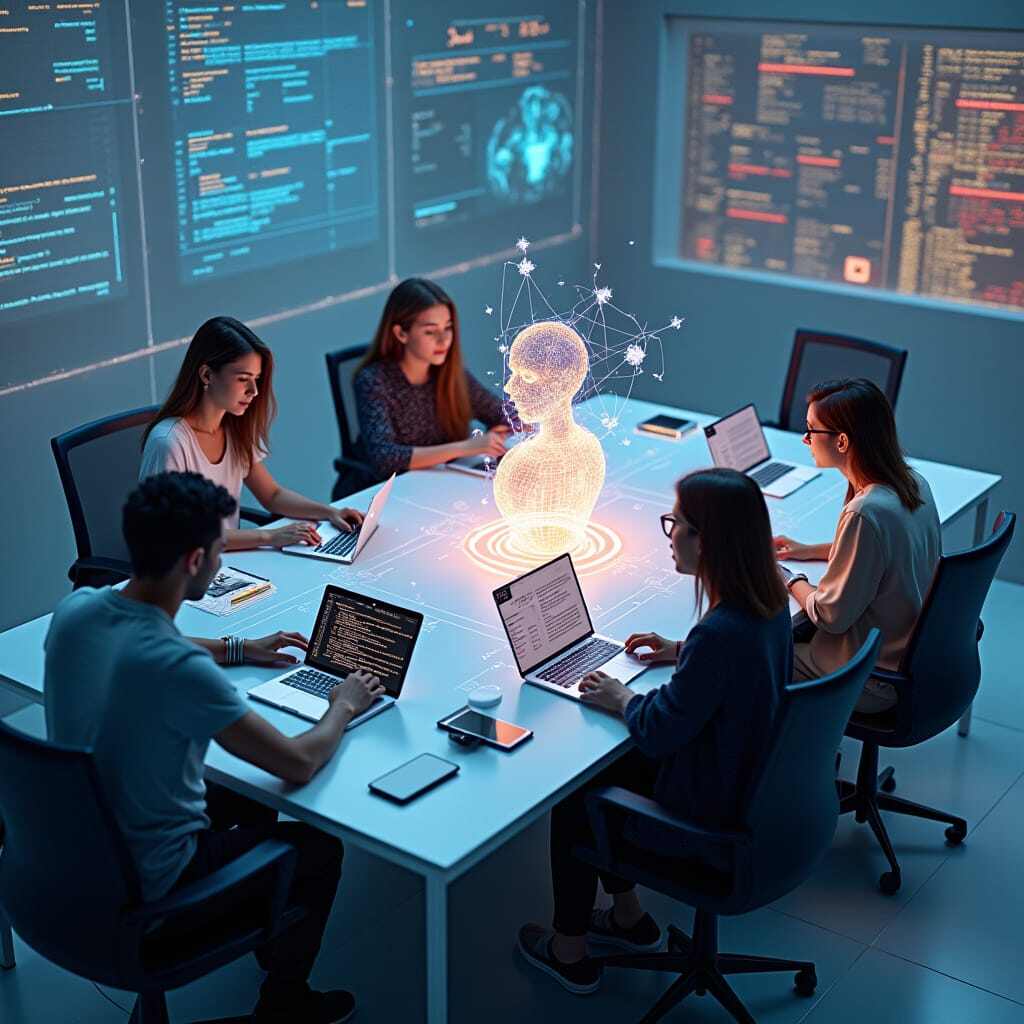Copy and paste. Three words which fundamentally shifted the way we were able to transfer data within the digital ecosystem. What’s about to follow may look like a bit of a bashing but, let me be clear, I have nothing but admiration for the way in which CTRL+C and CTRL+V improved our workflows. It was groundbreaking, allowing early users of graphical user interfaces (GUIs) to move information between applications.
However, I fear that copy and paste has become something of a technological cul-de-sac. It hasn’t evolved. Instead, it remains a relic that reflects a bygone era of computing, one that prioritized technical functionality over human efficiency.
Automation in Silos
Copy and paste emerged as a simple yet powerful solution to transfer text and data between applications. In many ways, it was the original sin of the GUI desktop—a feature born out of necessity rather than design foresight. The desktop GUI was created not to enhance human efficiency but to enable multiple programs to run simultaneously without crashing.
Copy/paste was the safe, easy method for users to move information between these siloed applications. Excuse the irony - given that Microsoft marketed Microsoft Office as a utopian ecosystem - but a prime example was the ability to copy text from a Word document to an Excel spreadsheet. It mimicked the manual task of transcribing text from one document to another, saving time and reducing errors, but it stopped there.
The core issue with copy and paste lies in its lack of context.
When we copy text or data from one application to another, we strip it of its context and relationships. This creates a fragmented workflow where information is duplicated without any underlying connection. It’s repetitive and manual, and our reliance on it highlights a significant shortcoming in our digital tools: they are still fundamentally based on a physical paper paradigm.
Now, proponents of AI would argue that this heavy lifting has gone; it can handle complex tasks, process vast amounts of data quickly, and automate repetitive processes which, in theory, reduces the burden on users.
While a wonderful invention, AI still requires prompting.
Generative AI models like chatbots and content creation tools need explicit instructions to generate desired outputs. Even with implicit prompting, such as auto-suggestions in email or document editing, users must still hold AI’s hand to refine and finalize the content.
Anything that is automated still exists in silos - while it’s not on the user to physically move these data points from A to B, there is still a glaring inefficiency in the way that we interact with digital information.
Automating the process merely papers over the cracks, and doesn’t address the underlying issue that information without context isn’t informative at all. The world already loses $7.8 trillion annually in lost productivity, and we don’t want to amplify that with the incorrect use of AI.
A Future Without Copy and Paste
So, what does a future without copy and paste look like?
In an ideal multi-app environment, applications would interact seamlessly, sharing data and context without the need for manual intervention. This would mean no more repetitive tasks of copying text from one app and pasting it into another. Instead, information would flow freely and contextually between applications, maintaining its relationships and relevance. The direct effect would be a huge increase in efficiency and output, with users having the capacity to focus on higher-level tasks rather than simply moving data from A to B.
This future hinges on moving beyond the digital paper mindset. Instead of thinking about how to transfer data, we should focus on how to maintain and utilize the context of that data. This would involve a fundamental shift in designing how applications interact with each other, and creating bridges between the silos that currently exist.
The key to breaking down the silos between apps lies in developing common protocols and AI-driven solutions that understand and preserve context.
APIs, such as RESTful APIs used in web services, and common file formats, like JSON and XML, are steps in this direction, allowing for some level of interoperability between applications.
But these solutions often fall short because they still rely on predefined standards that can quickly become outdated or incompatible.
Our New Relationship With Computing
To implement this vision requires new frameworks and standards that prioritize human-centric computing. Tools must explore these possibilities by developing ways to capture and maintain context as a side effect of doing work. This means that whether a human or an automated agent performs a task, the contextual relationships and history of that task are preserved and accessible.
This evolution in computing will fundamentally change our relationship with technology.
Instead of being tools that require constant manual input, our computers will become intelligent partners that understand our workflows and assist in maintaining context.
This will reduce the cognitive load on users, allowing for more focused and creative work.
The benefits extend beyond productivity. Enhanced situational awareness and reduced distractions will enable deeper and more meaningful work. I think back to a study in 2008 by the University of California, which found that the average worker - plagued by distractions - can only focus on one task for three minutes and five minutes at a time. Considering how much technology has evolved over the last 16 years, I can only speculate as to how many seconds, not minutes, that figure is now.
There will be skepticism, and I get that. Copy and paste is in our DNA, but automation alone is not the answer. While it can make processes faster, it does not address the fundamental issue of context loss. True innovation lies in rethinking how we design our tools to support human workflows, preserving context and enhancing collaboration. The future of work lies in intelligent systems that understand and maintain the context of our actions, enabling us to work more efficiently and creatively. By embracing this new paradigm, only then can we unlock unprecedented levels of productivity.
Ushering in the Future of Intelligent Systems
As we look to the future, it’s clear that the outdated practice of copy/paste no longer meets the needs of modern workflows. Reframe is leading the change to transform the digital workspace by eliminating the inefficiencies of traditional methods and introducing an Organized Work Environment (OWE) where context is preserved and integrated across all applications.
Reframe’s innovative approach tackles the problem at its core by embedding contextual awareness into the digital workspace. Instead of isolated apps and manual data transfers, Reframe’s OWE enables seamless integration of information, maintaining the vital context that is often lost in traditional workflows. This means users no longer need to juggle multiple tabs or remember where crucial pieces of information are stored. The entire workspace is designed to anticipate your needs, bringing together the tools and information you need into a cohesive “Stream.”
This new paradigm transforms your computer into a true partner in productivity, significantly reducing cognitive load and allowing you to focus on creative, high-impact work. Reframe is not just optimizing workflows - it’s reimagining how we interact with technology, making it more intuitive, efficient, and aligned with human-centered design. By embracing this new environment, we can unlock unprecedented levels of productivity and creativity, truly ushering in the future of intelligent systems.
Be the first to experience it. Sign up now to get early access.




